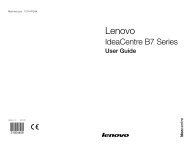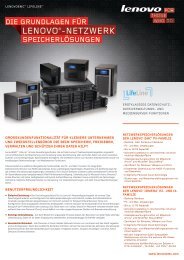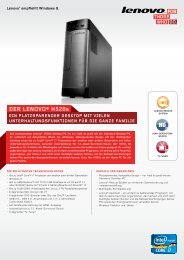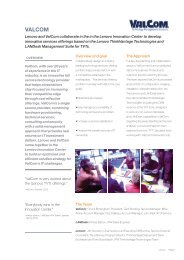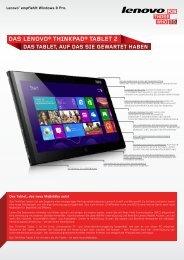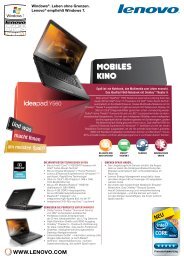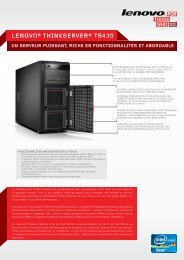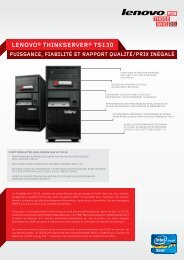Create successful ePaper yourself
Turn your PDF publications into a flip-book with our unique Google optimized e-Paper software.
clean and set the brightness to levels that enable you to see the screen clearly. Press Fn+Home or End<br />
to adjust display brightness.<br />
Head Position: Keep your head and neck in a comfortable and neutral (vertical, or upright) position.<br />
Chair: Use a chair that gives you good back support and seat height adjustment. Use chair adjustments to<br />
best suit your desired posture.<br />
Arm and Hand Position: If available, utilize chair arm rests or an area on your working surface to provide<br />
weight support for your arms. Keep your forearms, wrists, and hands in a relaxed and neutral (horizontal)<br />
position. Type with a soft touch without pounding the keys.<br />
Leg Position: Keep your thighs parallel to the floor and your feet flat on the floor or on a footrest.<br />
What if you are traveling?<br />
It may not be possible to observe the best ergonomic practices when you are using your computer while on<br />
the move or in a casual setting. Regardless of the setting, try to observe as many of the tips as possible.<br />
Sitting properly and using adequate lighting, for example, will help you maintain desirable levels of comfort<br />
and performance.<br />
Questions about vision?<br />
ThinkPad notebook's visual display screens are designed to meet the highest standards and to provide you<br />
with clear, crisp images and large, bright displays that are easy to see, yet easy on the eyes. Of course,<br />
any concentrated and sustained visual activity can be tiring. If you have questions on eye fatigue or visual<br />
discomfort, consult a vision care specialist for advice.<br />
Adjusting your computer to fit you<br />
Because your computer enables you to work in so many places, it is important that you remain attentive<br />
to good posture, good lighting and proper seating. Refer to the following tips to improve performance<br />
and achieve greater comfort:<br />
Active sitting and rest breaks: The longer you sit and work with your computer the more important it is<br />
to observe your working posture. Following “general recommendations for maintaining a healthy working<br />
posture” on page 83 and practicing “active sitting” are the best ways to avoid discomfort associated with<br />
your working postures. Making minor voluntary postural changes and taking short frequent work breaks<br />
are the key ingredients for healthy computing. Your computer is a light and mobile system; remember<br />
that it can easily be repositioned on your working surface to accommodate many posture modifications<br />
you might wish to make.<br />
Work area setup options: Familiarize yourself with all of your office furniture so that you know how to adjust<br />
your work surface, seat, and other work tools to accommodate your preferences for comfort. If your work<br />
area is not in an office setting, be sure to take special note of employing active sitting and utilizing work<br />
breaks. Note that there are many ThinkPad product solutions available to help you modify and expand<br />
your computer to best suit your needs. Access the following Web site to view some of these options:<br />
http://www.lenovo.com/accessories/services/index.html. Explore your options for docking solutions and<br />
external products that can provide the adjustability and features that you want.<br />
ThinkPad features that promote comfort: There are easy to use ThinkPad features that can help make<br />
your computer more comfortable to use.<br />
84 <strong>User</strong> <strong>Guide</strong>





